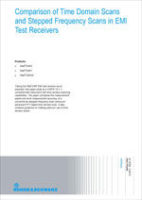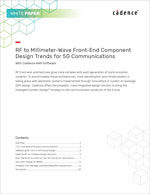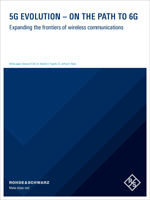Require Registration
December 1, 2020
Microwave RF softwarization in the Ka-band will upend satellite air interface design & deliver substantially more versatile platforms over the next decade. The disruptions impacting the space industry suggest the necessity of a development path towards fully software-defined satellites or SoftSats that deliver on-orbit reconfigurability and transponder re-use.
November 13, 2020
Phase-critical analog and digital transceiver systems are increasingly relied upon in global Aerospace & Defense programs, due, in part, to the rapid advancement and growth of high-resolution phased array antenna technology. These advancements are enabling significant innovation in satellite-based communications (SATCOM), surface, airborne, and space-based radars, secure point-topoint communications, autonomous vehicles, electronic warfare (EW), and space research.
November 13, 2020
Taking the R&S ESR EMI test receiver as an example, this paper looks at a CISPR 16-1-1- compliant test instrument with time domain scanning capabilities. The paper compares the measurement speed and level measurement accuracy of a conventional stepped frequency scan versus an advanced FFT-based time domain scan. It also contains guidance on making optimum use of time domain scans.
November 13, 2020
In Part 1, we introduced the phased array concept, beam steering, and array gain. In Part 2, we presented the concept of grating lobes and beam squint. In this section, we begin with a discussion of antenna sidelobes and the effect of tapering across an array. Tapering is simply the manipulation of the amplitude contribution of an individual element to the overall antenna response.
November 13, 2020
Automatic Fixture Removal (AFR) is a simple and an accurate way to de-embed a measurement fixture. These fixtures are typically used when measuring Surface Mount Device (SMD) type components to provide an interface from the Vector Network Analyzer (VNA) test port cables to the Device Under Test (DUT). The main challenge when characterizing such components is to completely isolate the actual DUT characteristics from the fixture; which becomes even more challenging at higher frequencies.
November 13, 2020
Most ADAS functions rely on radar sensors, and these safety-critical components must function correctly even under the most demanding of RF environments. The white paper describs a test procedure to replicate real life scenarios where the ADAS radar functions are activated during EMS testing and it contains some very interesting results.
November 13, 2020
RF front-end architectures grow more complex with each generation of communication systems. To accommodate these architectures, more densification and miniaturization is taking place with electronic systems implemented through innovations in system-in-package (SiP) design. Cadence offers the broadest, most integrated design solution to bring the Intelligent System Design™ strategy to the communication products of the future.
November 13, 2020
Suspended substrate filter technology uses air cavity construction achieve high Q and avoid the adverse effects of dielectric materials used in traditional stripline construction. The resulting performance gives designers the advantages of wide passbands with low insertion loss and stopband rejection on the order of 100 dB with fast roll-off. This paper reviews the fundamentals of suspended substrate filters, key performance features and the unique manufacturing challenges associated with these useful building blocks for wideband systems.
November 6, 2020
This eBook addresses many design issues with PCBs for high power GaN devices, higher frequency mmWave circuits, thermal expansion effects, heat sinking, extending operating temperatures, reducing circuit size, copper surface roughness effects, interface materials and connector launch methods. The first two articles deal with high power GaN devices addressing some of the design challenges for high voltage and high frequency designs. The next article looks at PCB materials to reduce circuit size and the one after addresses thermal power handling in space applications. The next article looks at environmental effects on circuit performance and how to test them while the last two articles address designing PCB mmWave circuits including amplifiers.
October 14, 2020
5G deployments have only recently started, and releases beyond R15 will continue to tap into the tremendous potential of 5G. However, as a new generation of cellular technology typically appears every 8-10 years, 6G can be expected around 2030.










